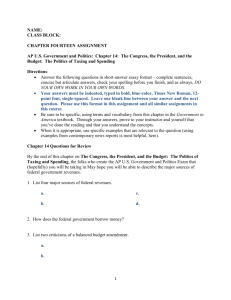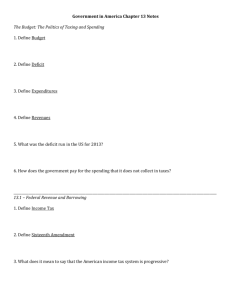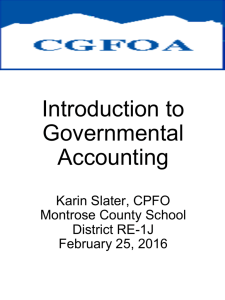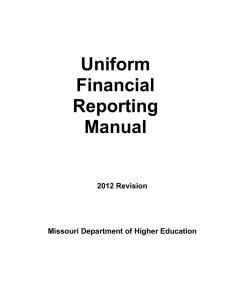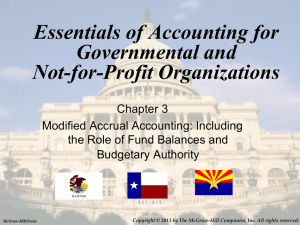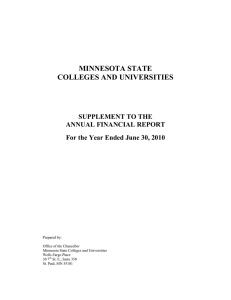Grant Accounting
advertisement
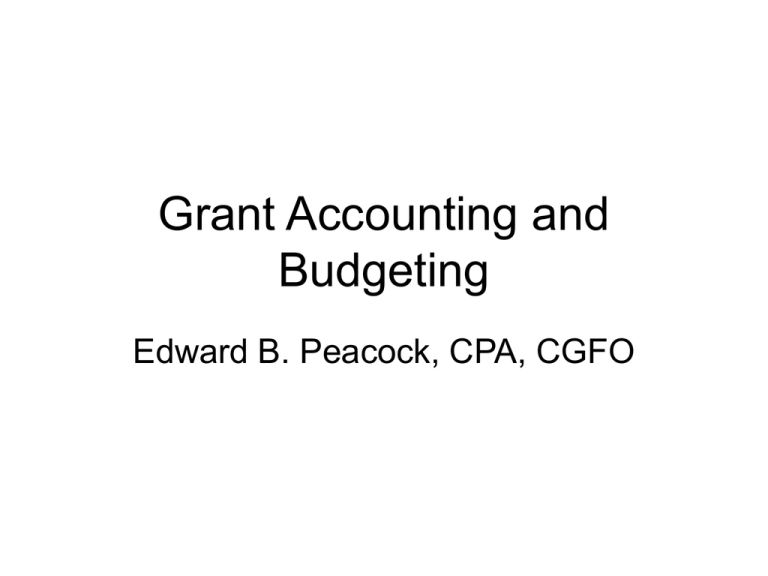
Grant Accounting and Budgeting Edward B. Peacock, CPA, CGFO Centralizing grant financial management into the finance department • Designate a position in the Finance Department responsible for: – Grant financial records management (a file for each grant) containing copies of: • Grant award • Grant budget • Grant designated officials • Quarterly expenditure reports • Reimbursement requests – Completing and submitting timely grant expenditure reports and reimbursement requests – Assigning general ledger account numbers for new grants – Preparing budget amendments for new grants – Adjusting grants receivable at fiscal year-end – Distributing grant budgetary reports to departments – Meets regularly with grant administrators Advantages of setting up a special revenue grant fund • • • • GAAP provide that special revenue funds may be used “to account for the proceeds of specific revenue sources that are legally restricted to expenditure for specified purposes.” Legal restrictions on grant proceeds often require that they be spent only for specified purposes. Use of special revenue funds avoids including restricted revenues within the general fund Provides a separate fund for reporting information on sources and applications of restricted resources. – Facilitates allocation of interest earnings to grants Integrating grant programs into the annual budgeting process • As part of an annual adopted budget – Designate the Special Revenue Grant Fund as part of the annual adopted budget – Appropriate an annual budget for each active grant program – Works well if there are matching funds (operating transfer from the general fund) • Appropriate grants on a project basis – Special Revenue Grant Fund appropriated on a project basis – Submit appropriations to the City Council as the grants are awarded – Requires a budget amendment for matching funds GRANT NOTES – SPECIAL REVENUE FUNDS Budgetary Disclosure GAAFR, p 302 Basic Financial Statements (BFS) • Budgetary comparisons must be presented in connection with the BFS for the GF and any individual major special revenue funds with annual (or biennial) appropriated budgets. • BFS – Functional level of detail • CAFR – Level of detail sufficient to demonstrate legal compliance with the legal level of budgetary control EXAMPLE CITY Special Revenue Grant Fund Statement of Revenues, Expenditures and Changes in Fund Balance - Budget and Actual For the Year Ended September 30, 20XX Actual Amounts Budgeted Amounts Original Final REVENUES Intergovernmental Homeland Security Grant COPS Universal Hiring Program Grant CJD School Resource Officer Grant Local School District Participation Tobacco Grant Interest Total revenues EXPENDITURES Current: Public Safety Salaries and benefits Supplies Contractual services Capital outlay Total expenditures Excess (deficiency) of revenues over (under) expenditures OTHER FINANCING SOURCES (USES) Transfers in (out) Net change in fund balance Fund balances - beginning Fund balances - ending $ Variance with Final Budget Positive (Negative) 15,000 18,000 9,000 2,000 200 44,200 6,000 15,000 18,000 9,000 2,000 200 50,200 6,000 15,000 18,000 9,000 2,000 186 50,186 14 14 43,500 6,000 2,000 2,500 54,000 48,500 9,000 2,000 2,500 62,000 48,500 9,000 400 2,500 60,400 1,600 1,600 (9,800) (11,800) (10,214) (1,586) 10,000 12,000 12,000 200 200 1,786 200 $ 200 $ 1,786 (1,586) $ (1,586) GRANT NOTES – SPECIAL REVENUE FUNDS Receivables and Liabilities Receivables, GAAFR p 86 • Recognize receivable as soon as all eligibility requirements have been met Liabilities, GAAFR, p 95 • Grantor – Government should recognize liability as soon as recipient meets all eligibility requirements • Grantee – Recognize liability as soon as it is probable that the recipient has lost its claim to the assets Example City Balance Sheet Governmental Funds September 30, 20XX General Fund ASSETS Cash and cash equivalents Investments Receivables (net of allowance for uncollectibles) Interest Property taxes Sales taxes Other Due from other funds Prepaids Total assets $ LIABILITIES AND FUND BALANCE Liabilities: Accounts payable and other current liabilities Accrued liabilities Taxes payable Due to other funds Deferred revenue Deferred revenue - court Total liabilities Fund balances: Reserved for: Public Safety Building/Street Improvements Grant programs Unreserved, reported in General fund Debt service fund General capital projects fund Total fund balances Total liabilities and fund balances 1,657,287 718,117 (107,554) 41,973 274,325 389,581 384,179 616 3,358,524 Special Revenue Grant Fund General Capital Projects Fund $ $ 116,117 31,158 (3) 4,145 41,973 125,538 318,929 $ 1,786 12,000 13,786 250,901 3,033,127 3,284,028 Total Governmental Funds General Debt Service Fund $ 40,521 42,567 339 34,649 118,076 12,000 12,000 - 34,649 34,649 - 1,786 3,284,028 - 3,039,595 3,039,595 3,358,524 1,786 13,786 3,284,028 3,284,028 83,427 83,427 118,076 $ $ $ $ 1,950,496 3,793,810 (95,554) 339 76,622 274,325 389,581 384,179 616 6,774,414 116,117 31,158 (3) 16,145 76,622 125,538 365,577 $ 3,284,028 1,786 3,039,595 83,427 6,408,836 6,774,414 Multi-year grant appropriations, capital grants, etc. • Use capital projects funds for capital grant expenditures – Centralizes all capital expenditures in the capital projects funds – Grant proceeds are accounted for as a revenue source to the capital projects fund – Requires tracking of multi-year appropriations in the financial system GRANT NOTES – ENTERPRISE FUNDS Interest capitalization on capital projects GAAFR, p 102 • Grant financed portion of a construction project – – Externally restricted to the acquisition of specified qualifying assets - interest capitalization prohibited – Not externally restricted – capitalize interest on any portion of capital asset financed with grants Example City Statement of Revenues, Expenditures and Changes in Fund Net Assets Proprietary Funds For the Year Ended September 30, 2005 Water and Sewer Fund OPERATING REVENUES: Charges for sales and services: Water sales Sewer charges Solid waste Penalties Tap fees Miscellaneous Total operating revenues $ OPERATING EXPENSES: Costs of sales and services: Salaries and benefits Supplies and maintenance Contractual services Sanitation contractual services Depreciation Bad debt expense Total operating expenses Operating income (loss) NONOPERATING REVENUES (EXPENSES): Intergovernmental revenues Interest income Interest on long term debt Total nonoperating revenue (expenses) Income before contributions and transfers Capital improvement fees Transfers out Change in net assets Total net assets - beginning Total net assets - ending 1,097,052 763,238 381,984 40,231 16,145 9,680 2,308,332 361,761 273,421 117,787 394,975 222,592 22,822 1,393,357 914,974 $ 133,975 2,433 (1,628) 134,779 1,049,754 57,706 (1,156,626) (49,167) 6,484,209 6,435,043
